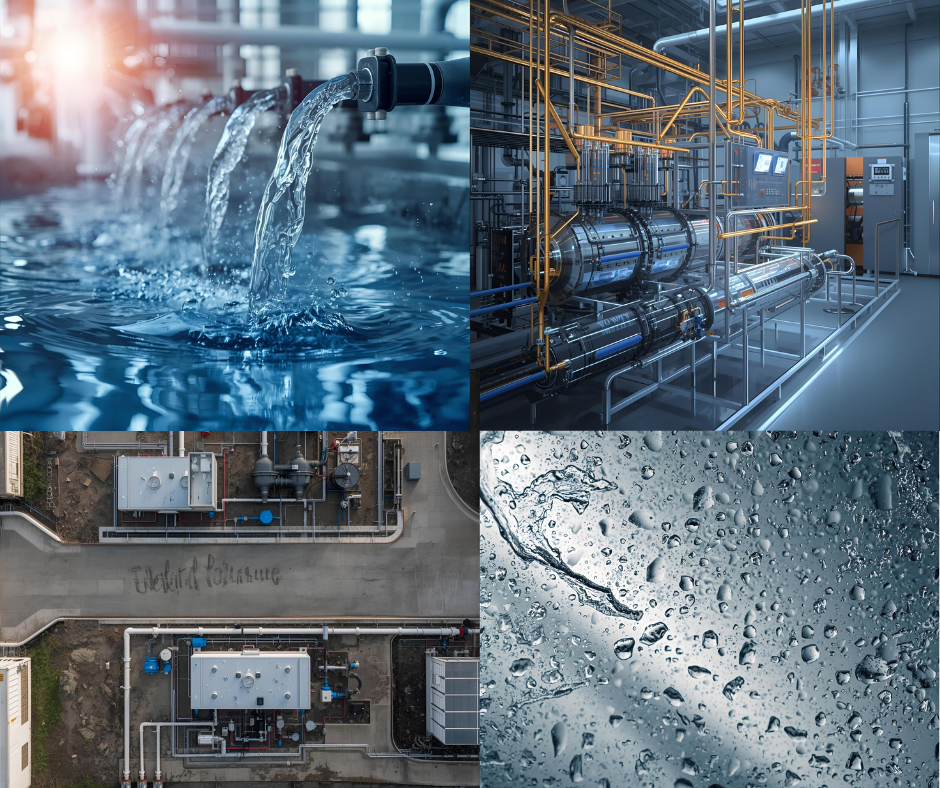Driving Efficiency in Water Reuse Through Reverse Osmosis Energy Recovery
Innovative energy recovery devices are transforming reverse osmosis systems, cutting energy use by up to 30% while advancing the sustainability and cost-efficiency of global water reuse efforts.

Water scarcity and rising energy costs have driven utilities and industries to seek smarter, more sustainable ways to reuse water. One of the most impactful advances in this field is the use of energy recovery devices (ERDs) within reverse osmosis (RO) systems. These technologies capture and reuse the hydraulic energy that would otherwise be lost in the process, reducing both operational costs and carbon emissions.
Recent projects in Belgium and China have demonstrated that integrating ERDs into RO systems can cut energy consumption by up to 30%. This reduction not only lowers the financial burden of running high-pressure pumps but also enhances the sustainability of water reuse operations — a crucial consideration as global demand for freshwater intensifies.
How Energy Recovery Devices Work in Reverse Osmosis
Reverse osmosis systems rely on high-pressure pumps to force water through semi-permeable membranes, separating clean water (permeate) from concentrated waste streams (brine). Traditionally, the energy in the brine stream is discharged along with the waste, resulting in significant energy losses.
ERDs change this dynamic. These devices capture the hydraulic energy from the concentrate (brine) stream and transfer it back into the incoming feedwater. By doing so, they reduce the workload of high-pressure pumps, leading to lower energy consumption and longer equipment life.
This process creates a positive cycle of efficiency. Instead of continuously feeding energy into the system, ERDs help reuse what’s already there — transforming wasted pressure into useful power.
Proven Energy and Cost Savings
Real-world case studies show the practical impact of ERDs on water reuse projects:
- Belgium: A wastewater reclamation facility incorporated ERDs into its RO process, achieving energy savings of nearly 30%. This efficiency translated to substantial reductions in electricity costs, allowing for a rapid payback period on the initial investment.
- China: A large-scale industrial plant retrofitted its existing RO system with modern ERDs. The result was similar — a notable decrease in power consumption and measurable improvements in the plant’s environmental performance, aligning with national energy-efficiency goals.
Both examples illustrate how energy recovery in reverse osmosis is not merely a theoretical advantage but a proven, scalable solution for industries and municipalities seeking sustainable water management.
Retrofitting Existing RO Systems: A Practical Path Forward
One of the most compelling aspects of ERDs is their adaptability. Retrofitting existing RO plants with energy recovery technology is entirely feasible and often requires minimal downtime. Engineers can integrate ERDs into existing infrastructure without major reconstruction or disruption to ongoing operations.
This makes ERDs a practical choice for facilities looking to improve performance without large capital expenses. In many cases, the return on investment (ROI) is achieved within just a few years due to the significant energy savings.
Retrofitting also supports corporate sustainability goals, as reduced energy use directly lowers a facility’s carbon footprint. For organizations reporting environmental, social, and governance (ESG) metrics, this improvement can bolster compliance and enhance reputation.
Environmental and Operational Benefits
Beyond cost and efficiency, ERDs offer meaningful environmental gains. By capturing and reusing energy, these systems reduce greenhouse gas emissions associated with electricity generation. In water-scarce regions, they also make reuse and desalination more viable by improving the overall economics of treatment.
Key benefits include:
- Lower carbon footprint: Reduced energy demand means fewer emissions from power generation.
- Extended equipment life: Less strain on pumps and motors decreases maintenance needs.
- Increased process stability: Energy recovery systems can smooth out pressure fluctuations, improving membrane performance.
When viewed in combination, these advantages reinforce the role of ERDs as essential tools in advancing both sustainability and efficiency within the global water sector.
A Step Toward Smarter Water Reuse
Energy recovery is quickly becoming a defining feature of next-generation water reuse systems. As industries and municipalities pursue circular water management strategies, technologies like ERDs demonstrate how innovation can directly translate to environmental and financial resilience.
The transition toward energy-efficient water reuse not only supports global sustainability targets but also empowers facilities to remain competitive amid rising operational costs. Whether through new construction or retrofits, implementing ERDs represents a smart, forward-looking investment in the future of water infrastructure.
Building Links Toward a Sustainable Water Future
For organizations and decision-makers exploring water reuse technologies, several global leaders and resources offer further insights into sustainable design and innovation:
- Learn about energy-efficient desalination technologies and how they complement ERDs in improving system performance.
- Explore membrane technology advancements from the International Water Association (IWA).
By harnessing reverse osmosis energy through ERDs, the global water sector moves closer to achieving a sustainable balance — where efficiency, cost-effectiveness, and environmental stewardship flow together in harmony.
